Secrets of the Symbolics Console: Part 2
Let's take another look at the console. There are several boards inside, but this is the only one which deals in custom Symbolics protocols (as opposed to the widely-known intricacies of operating a black-and-white CRT.)
The rough annotations are my own. Click on the pictures for super-size (~10MB!) images.
Once again, the Phase Encoded Video decoder board:
The labeled chips are Emitter-Coupled Logic (ECL.) This explains the frequency of the video signal - 160MHz, Manchester-coded (80MHz data and clock) an astounding one for any entirely digital process happening in a machine of this vintage.
Now for the sad part: this board is hot-glued to its moorings in several places. Naturally, I could tear it loose, but I imagine that it was secured in this way for a reason. I would prefer to leave it in place, to ensure a working console in the immediate future. And so for now, my reverse-engineering efforts will focus on the transmission line (which I have been spying on through the console's video repeater port) and the video card of the 3620 machine itself.
Let's open up the latter. The densely-packed internals look nothing like those of any PC:
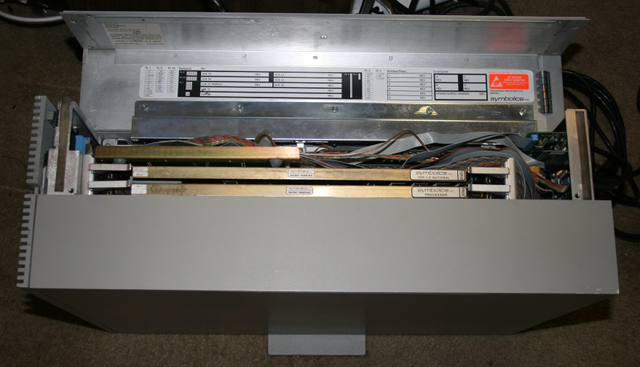
The closed portion of the chassis conceals the (full-height ESDI) disk and the Lisp Machine's massive, exceptionally hungry power supply.
The console I/O board (which I have barbarously called a "video card") is obscured beneath the rainbow cable visible on the upper left.
Let's pull it out:
To be continued...
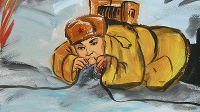
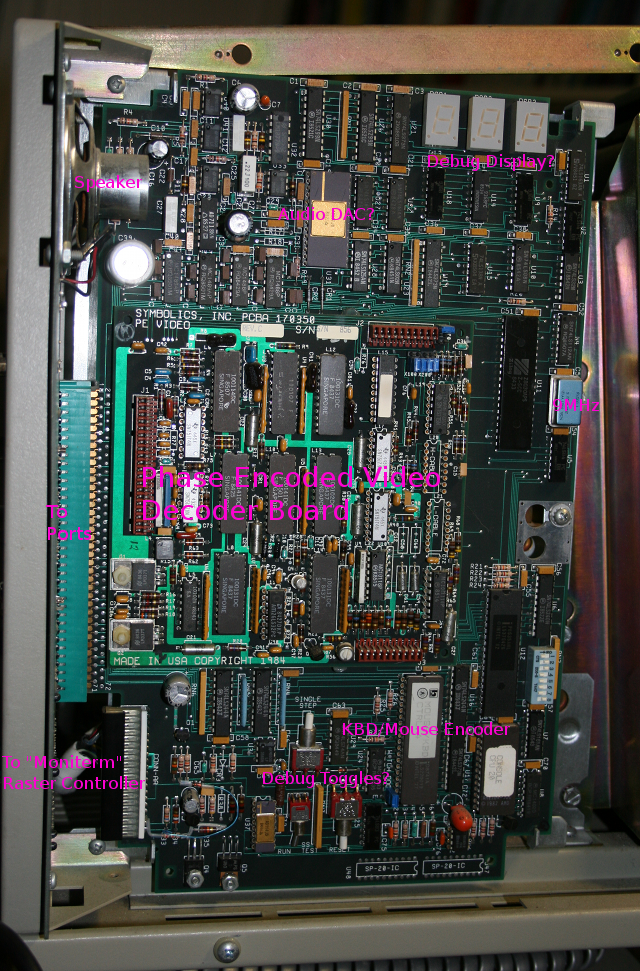
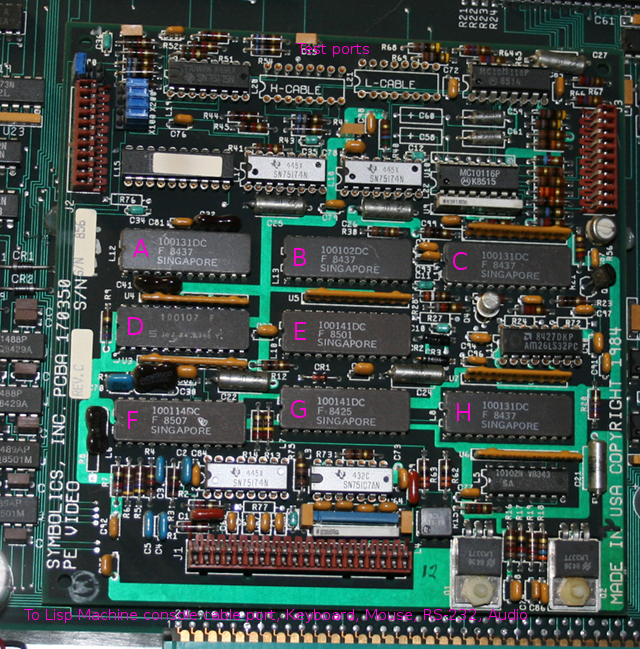
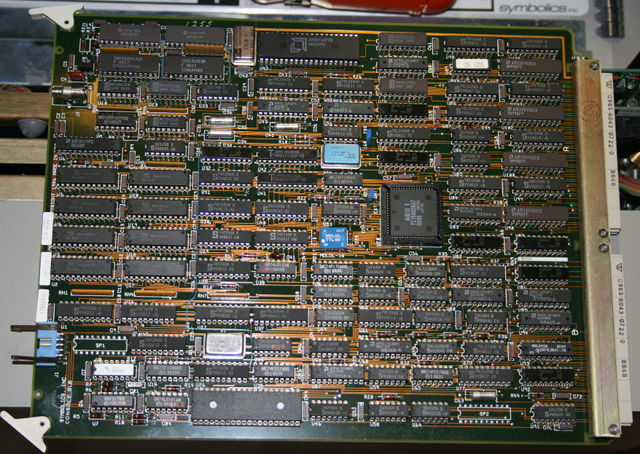


I thought you were going to be writing software for 64-bit x86 arch. Have you been pulled into the world of hardware forever?
> I thought you were going to be writing software for 64-bit x86 arch.
I intend to continue in the near future. Stitching silk purses out of sow's ears gets tiring quickly, and sometimes a long hiatus is unavoidable. "C architectures" plain old suck, and working with them while keenly aware of the alternatives is uncommonly frustrating.
> Have you been pulled into the world of hardware forever?
No. However, my periodic FPGA kick has coincided with my periodic Symbolics kick, and this resulted not only in an actual Symbolics machine sitting in my living room, but an entire side-project of replacing its most fragile peripherals (console and disk) with solid-state equivalents.